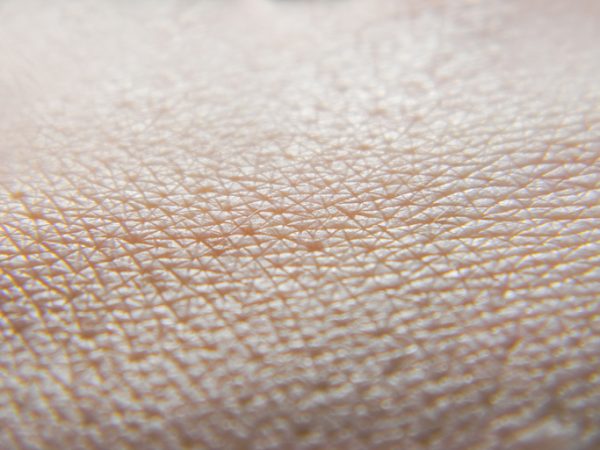
The skin, our body’s outermost protective layer, is home to a fascinating ecosystem of microorganisms, collectively known as the skin microbiome. This intricate community, consisting of bacteria, fungi, and other tiny organisms, exhibits unique variations among individuals based on factors like age, biological sex, and BMI.
Within skin health, the skin microbiome plays a critical role in developing allergic conditions. These skin allergies, commonly experienced by many individuals, are closely intertwined with our skin microbiome’s delicate balance and composition.

With the Rise of AI, What IP Disputes in Healthcare Are Likely to Emerge?
Munck Wilson Mandala Partner Greg Howison shared his perspective on some of the legal ramifications around AI, IP, connected devices and the data they generate, in response to emailed questions.
Scientific researchers actively explore the intricate relationship between our skin microbiome and allergic skin conditions. Although the precise mechanisms are still being investigated, emerging evidence suggests that the state of our skin microbiome significantly influences our susceptibility to these allergies.
This article will define common skin allergies, describe the relationship between the skin microbiome and allergies, and discuss the protective role of beneficial bacteria in preventing allergic skin conditions.
A brief overview of allergic skin conditions
- Dermatitis is an inflammation of red, dry patches of itchy skin. This condition comprises allergic reactions, such as atopic dermatitis (eczema) and contact dermatitis.
- Eczema is a skin condition that usually starts in childhood and lasts long. It can be caused by certain things in the environment. For example, staph infections, related food allergies, and sweating may cause eczema flare-ups.
- Contact dermatitis is caused by irritants like perfumes and cosmetics, while allergens like poison ivy trigger allergic contact dermatitis.
The impact of microbial diversity on allergic skin conditions
Modern society recognizes that diversity is positive: Your skin’s microbiome is no exception. Reduced skin microbiome diversity may increase the prevalence of allergic and chronic inflammatory diseases. The biodiversity hypothesis explains this phenomenon: Our progressively urban civilization is primarily separated from greenspace and the natural world, thus in less contact with environmental microbial diversity.
Exposure to specific microbes over time increases resistance to diseases caused by those microorganisms. Lack of exposure makes one vulnerable. Certain microbes can trigger skin conditions. A lack of healthy microbes can make the body more susceptible to diseases like acne, athlete’s foot, and eczema.
Atopic dermatitis susceptibility outbreaks are correlated with mutations in over 30 host gene loci, including the gene encoding skin barrier protein filaggrin, as well as other genes linked to the immune system. In addition to S. aureus, other factors support the hypothesis that microbiota is significant in allergic skin disease development.
How beneficial bacteria helps prevent allergic skin conditions
We don’t generally conceptualize microbes—especially bacteria—as “good things,” but beneficial bacteria help promote immune health. The skin is our largest organ. It protects us from harmful pathogens and houses helpful microorganisms. Furthermore, evidence supports the hypothesis that allergic disease flare-ups often result from disturbed skin microbiomes, while a healthy skin ecosystem promotes and preserves health.
Just as specific microbes cause skin conditions, other microbes protect you: Cutibacterium acnes species metabolize skin sebum and convert it into propionic acid, which in turn regulates the growth of the alkali-loving Staphylococcus aureus, which can only thrive in a high pH environment. If sebum production decreases—or the skin pH level is disrupted for other reasons—the Staphylococcus aureus infection rate will skyrocket. Recent evidence suggests several bacteria and fungi species might protect you from severe skin illnesses like nonmelanoma skin cancers.
Although we don’t yet fully understand the exact mechanisms at play, it’s clear that pathogenic skin microbiota is heavily associated with allergic diseases, and “good” bacteria assist with healthy immune development. Future research should focus on identifying the interactions between the immune system, microbes, and allergic responses; and exploring potential therapeutic strategies targeting the skin microbiome for allergy management.
Photo: VolodymyrV, Getty Images
Jill McGonigle is the Director of Corporate Communications at Crown Laboratories, a rapidly growing, fully integrated global skincare company based in Johnson City, TN. She is a strong advocate for the people who bring Crown’s award-winning portfolio to customers in 44 countries. She has been in the Dermatology and Aesthetics fields for nearly 25 years, during which time she has held roles in Marketing, Professional Relations, and Communications. She enjoys sharing her company’s accomplishments—whether they be new innovation and technology, clinical research, or company growth—educating people about Crown’s advancements in skincare science topics like the skin microbiome is her passion.














